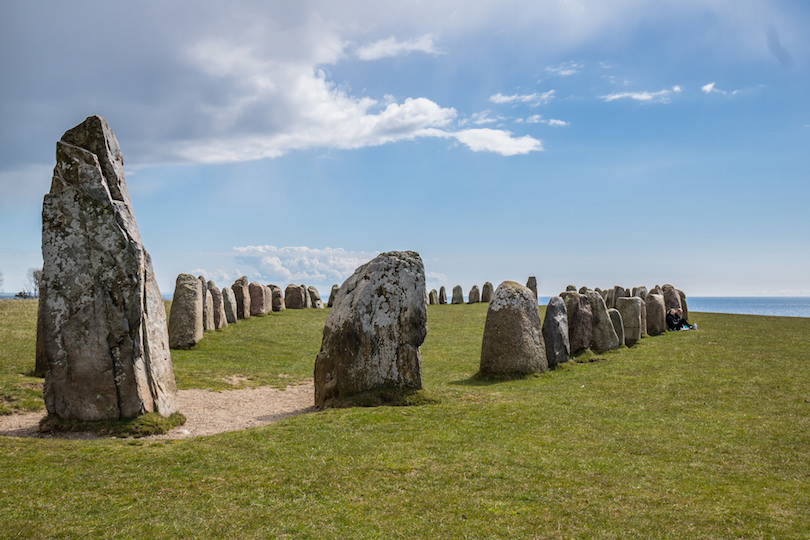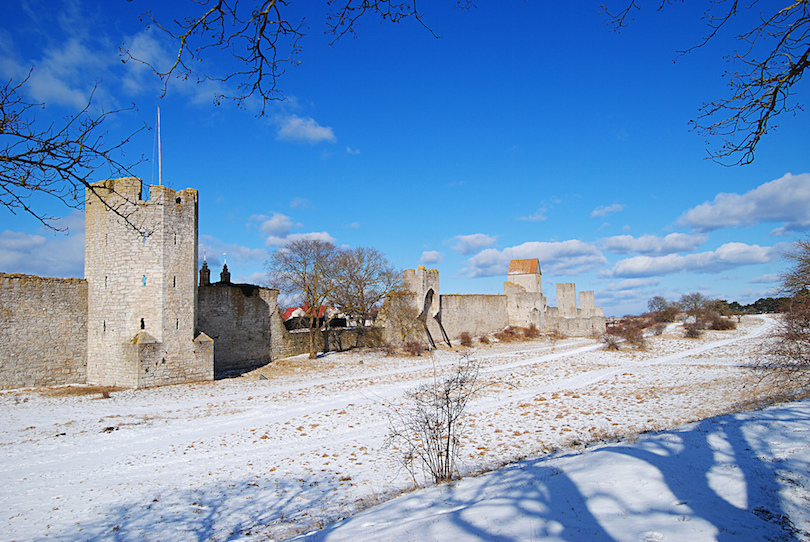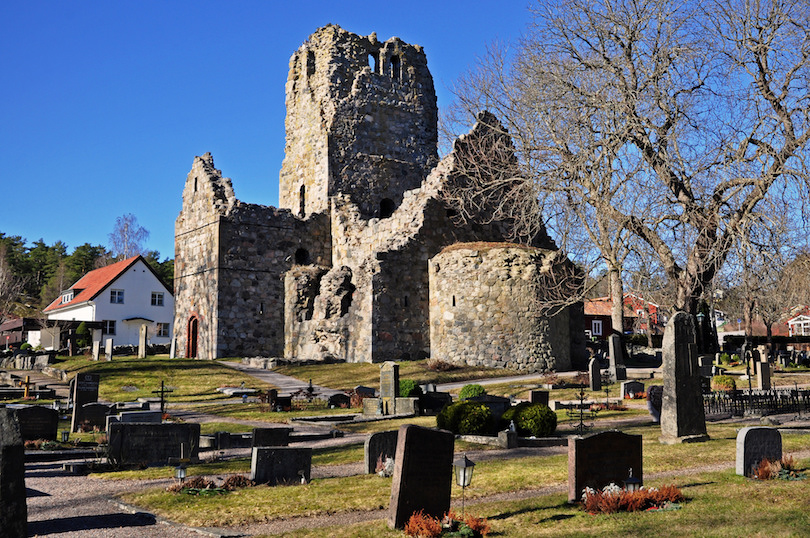The Local guide: 52 ways to save money in Sweden
Sweden may have a reputation for being an expensive country, but there are ways to save money. Here are our top tips.
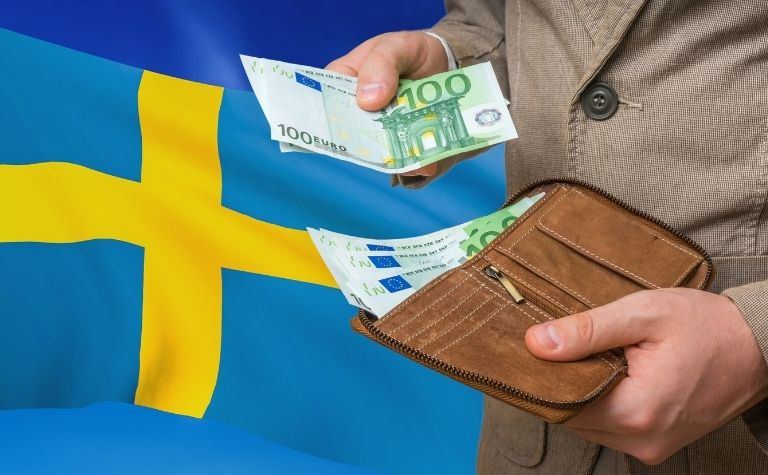
Sweden may have a reputation for being an expensive country, but there are ways to save money. Here are our top tips.
What Are the Best Places to Visit in Sweden?
Welcome to the Sweden Travel Guide! Long regarded as one of the ‘coolest’ destinations in Europe and home to both super stylish cities and spectacular natural splendors, you’ll have no lack of ways to spend your days in this wonderful country. While the Scandinavian countries have a reputation for high prices you’ll find that those in Sweden are closer to what you’d expect in Germany or France compared to Norway or Denmark.
At Christmas, this is a megacity that really looks its stylish, especially when seen from the top of the Ferris wheel at the accessibly central Liseberg recreation demesne. Make sure to also see the Universeum scientific center and climb around the major vessels saved at the original maritime gallery. The near fish request offers spectacular casual dining!
15 Most Charming Small Towns in Sweden
Sweden is known as a land of good design in stark nature – and nowhere is that more recognizable than in its small towns. From fishing villages filled with traditional wooden cottages to medieval town squares filled with winding streets, the Scandinavian country is a gold mine of castles, churches, and villas on a beautiful backdrop of farmland, beaches and mountains.
From its far-flung frozen north and forever snowy Lapland, home of the Sami people, to its sparkling seas and patchwork of islands in the south, we take you on a journey through the most charming small towns in Sweden – and why you should be visiting them right now.
15. Marstrand
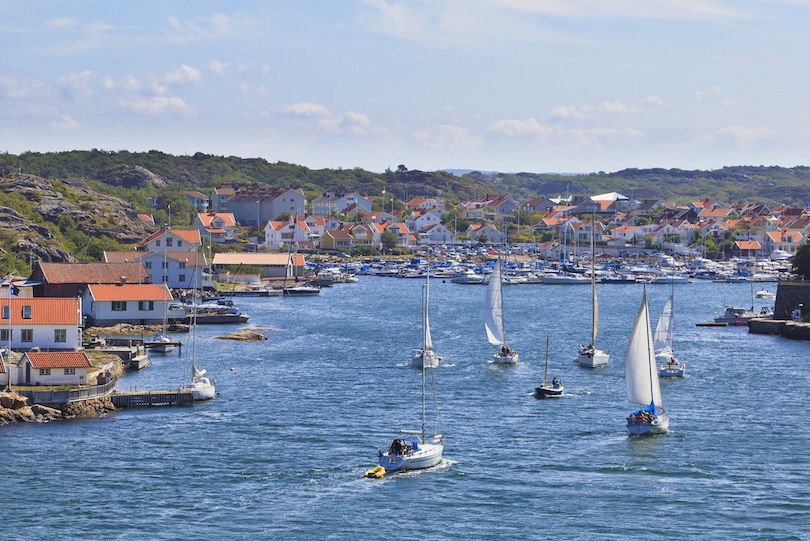
Granted city status in 1200 AD, the seaside settlement of Marstrand – named after the island on which it’s situated, Marstrandsön – is often still referred to as a ‘city’ by Swedes despite having a population of just over 1,000. It is, however, home to the mid-17th century fortress of Carlsten, named for King Karl X Gustav of Sweden and a 14th-century medieval church.
The city is also a renowned center for sailing and sailing competitions, hosting the Match Cup Sweden (part of the World Match Racing Tour). Marstrand is known as a playground for celebrities and rich Swedish residents alike, who come in the summer for sea, shopping and nightlife.
14. Vadstena
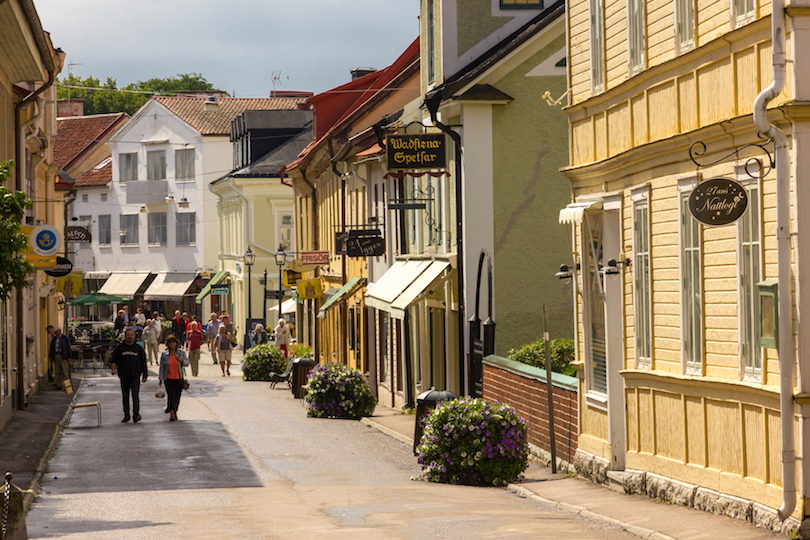 © Daniel M. Cisilino / Dreamstime
© Daniel M. Cisilino / DreamstimeIn southeastern Sweden, and nestled on the southern shores of Vättern – the country’s largest lake and the sixth-largest in Europe – lies the town of Vadstena. Its famous for a few things: a castle, built in 1545 as a fortress before becoming a habitable royal castle in 1660, and then falling out of favor and used for grain storage (now a museum); Vadstena Town Hall – the oldest in Sweden; a 14th-century abbey founded by the Swedish Saint Bridget; and a medieval town square as pretty as it is old.
13. Karlskrona
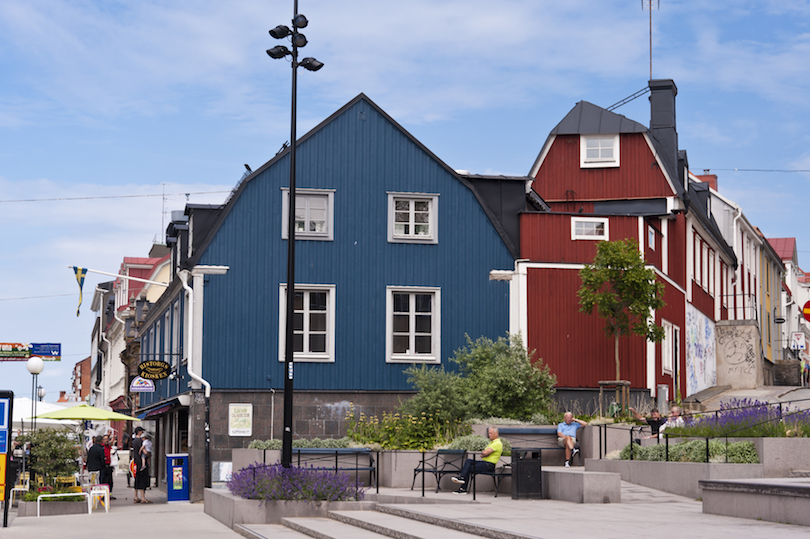 © 3quarks / Dreamstime
© 3quarks / DreamstimeFounded in 1680 as a naval base meant for protection from invasion and raids from the south, Karlskrona is today known as Sweden’s only baroque town, with its buildings and layout left virtually intact since its founding.
The central building of the town is the Fredrikskyrkan church, constructed in the 1690s; other churches in town are the early 18th-century Church of the Holy Trinity (built for the town’s German residents), and the more traditional Amiralitetskyrkan, which is also Sweden’s largest wooden church.
12. Kiruna
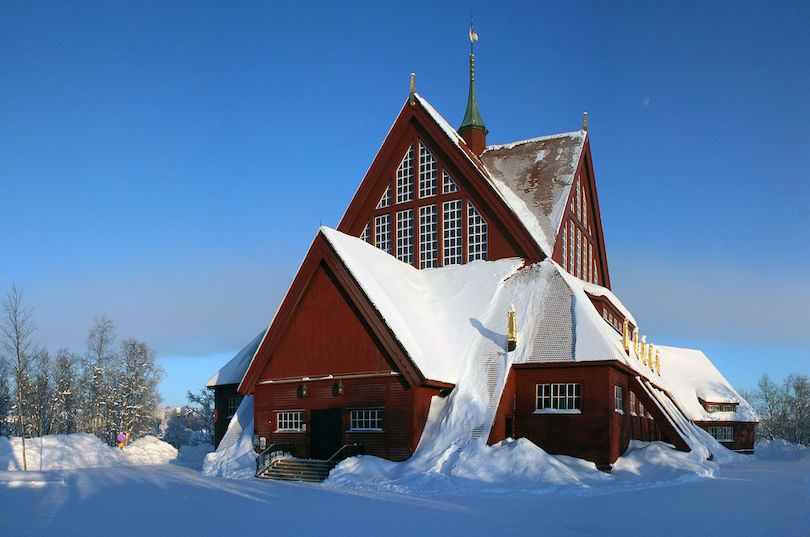 Heinz-Josef Lucking / Wikipedia
Heinz-Josef Lucking / WikipediaKiruna is unique in that it is currently in the process of being moved, bit by bit, to a new location 3 kilometers east – due to the Kiirunavaara mine literally undermining the town. It also happens to be Sweden’s northernmost town, and is a great place to see the splendor of the Northern Lights, as well as a convenient gateway to nearby Abisko National Park.
The world’s first Icehotel was also built around 11 miles north of Kiruna. In 2001 the town’s stylishly elegant wooden Gothic Revival church was voted Sweden’s favorite pre-1950s building, and is a stand-out icon of Kiruna.
11. Alby
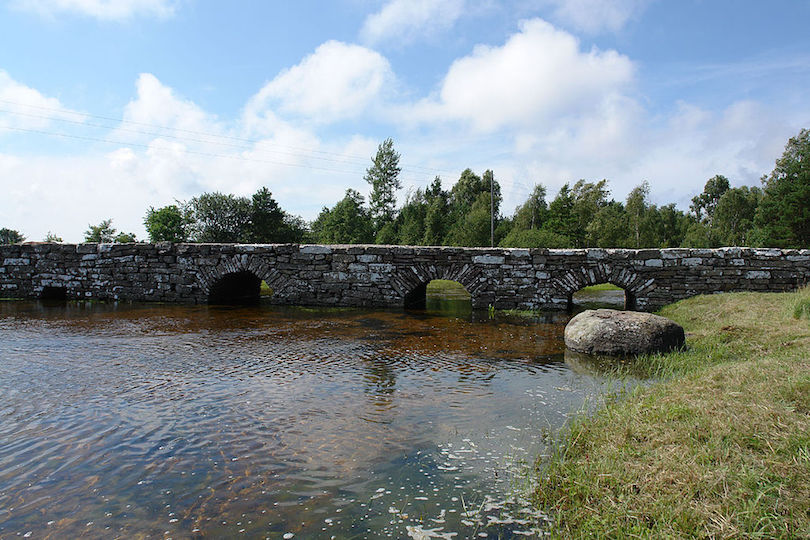 Jurgen Howaldt / Wikipedia
Jurgen Howaldt / WikipediaLocated on the island of Öland, tiny Alby is home to a wealth of history. Alby is thought to be the oldest settlement on Öland, with archeological evidence of farming communities living here from 4000 BC. Scattered around are ancient standing stone circles – indicative of burial grounds.
Nearby is the iron age ringfort of Eketorp and there are also medieval buildings, such as stone bridges, and a number of iconic 17th-century wooden houses. Alby is a charming cocktail of heritage that history-lovers won’t want to miss.
10. Gammelstaden
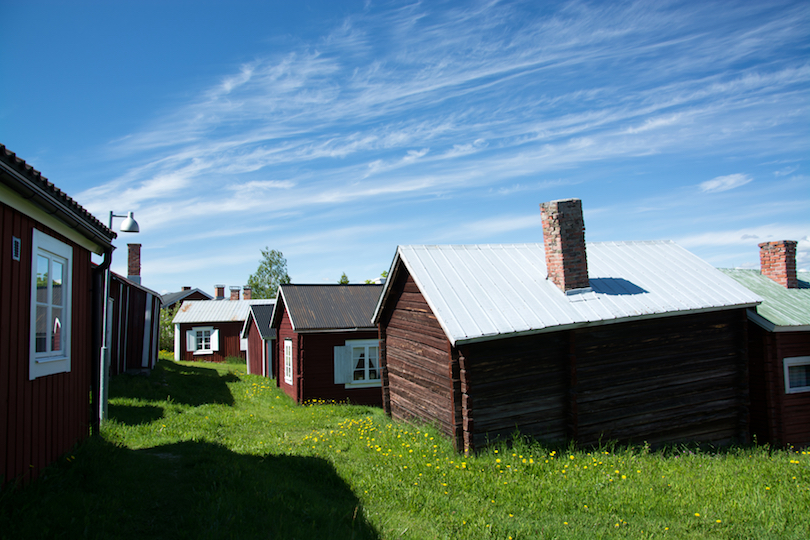 © Uhg1234 / Dreamstime
© Uhg1234 / DreamstimeIn the north of Sweden, close to the city of Luleå, lies the town of Gammelstaden. It’s mainly famous for the quaint settlement that grew up around the 14th century Nederluleå Church.
The Lutheran church, with its square tower and large sloping roof, sits at the center of 424 traditional wooden cottages, painted in the quintessentially Swedish Falu red; it’s the largest medieval church of any kind in the northernmost and sparsely populated region of Norrland. It’s possibly the best preserved example of how many towns once looked throughout Scandinavia.
9. Nora
 © Tom Pilgrim / Dreamstime
© Tom Pilgrim / DreamstimeArriving at Nora is like stepping back through time: it is home to more of Sweden’s characteristic traditional wooden houses, spared destruction by fire or demolition. 18th century Swedish poet Anna Maria Lenngren once said of the town, “Så liten stad, så mycket smak” – or in English, “Such a small town, so much flavor.”
The iconic houses are tucked away in picturesque cobbled streets that make exploring the 17th-century town a joy. In its central location (near the town of Örebro), and just two-and-a-half hours by train from Stockholm, Nora is a popular destination for tourists.
8. Ystad
Located in Sweden’s southernmost Skåne (or Skania) County, the town of Ystad is an old one – dating back to the 11th century, the history of this place goes back almost a millennium. Aside from being the home of fictional detective Kurt Wallander, Ystad is known as a tourist destination for its heritage buildings, many of which – including the grand town hall – surround the Stortorget or Main Square.
It’s also home to Greyfriars Abbey, one of Sweden’s best preserved monasteries, and the medieval St. Mary’s Church – both particularly striking examples of the Brick Gothic style. East of Ystad is the megalithic monument of Ales Stenar, consisting of 59 large boulders forming a stone ship.
7. Mariefred
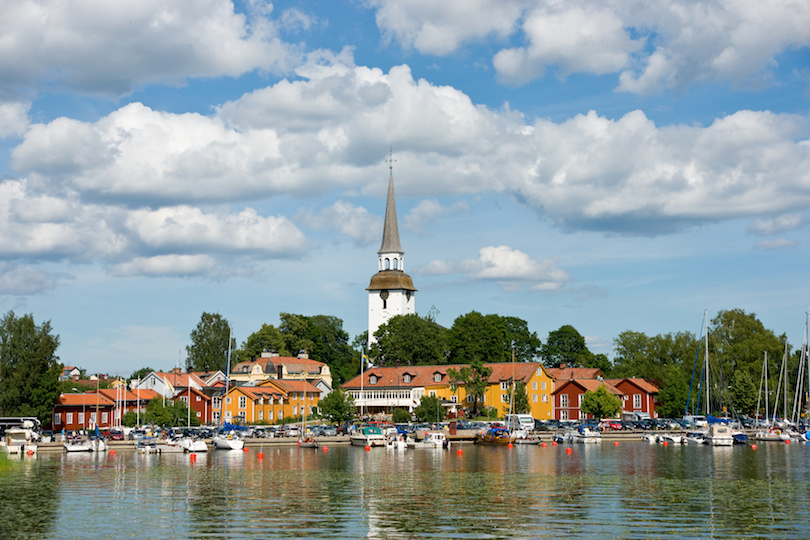
Just an hour away from Stockholm, Mariefred is a very pretty town. Here you can discover many 18th-century wooden buildings, from traditional summer houses to its old wooden railway station – now a museum, with steam trains still making a welcome appearance for tourists.
It’s also famous for the 14th-century Gripsholm Castle, an imposing fortress turned royal residence turned museum (still considered to be at the disposal of Swedish King Carl XVI Gustaf). Mariefred also boasted Scandinavia’s only Carthusian monastery, but it was pulled down – now the town’s parish church stands on its former location.
6. Molle
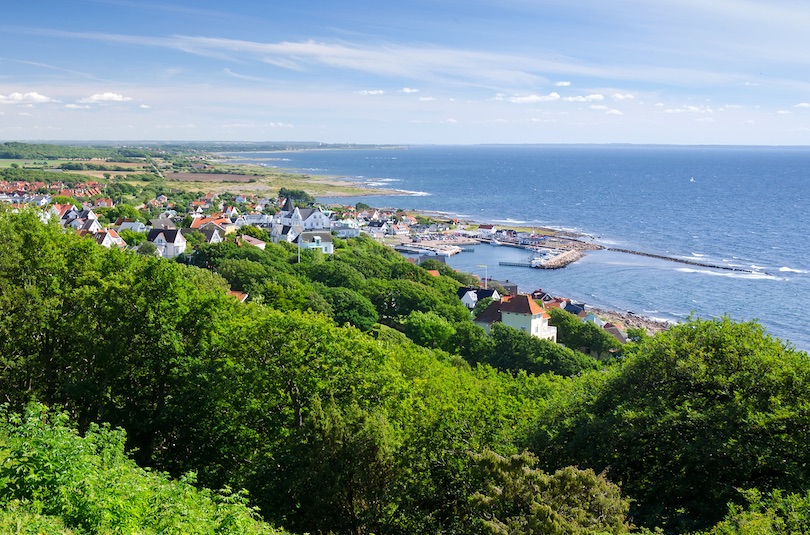 © Piotr Wawrzyniuk / Dreamstime
© Piotr Wawrzyniuk / DreamstimeThis coastal town on the southwest coast of Sweden has long been popular as a seaside resort and it’s no truer nowadays. With a scenic harbor filled with shops and picturesque cafes (the waffles here come highly recommended), Mölle began life as a lively fishing village but soon grew a reputation; it was here where mixed-sex bathing began in the late-19th century – scandalous for the times – which also gave rise to Mölle as a center of erotic entertainment. Today, of course, it’s mainly visited for the picturesque location.
5. Simrishamn
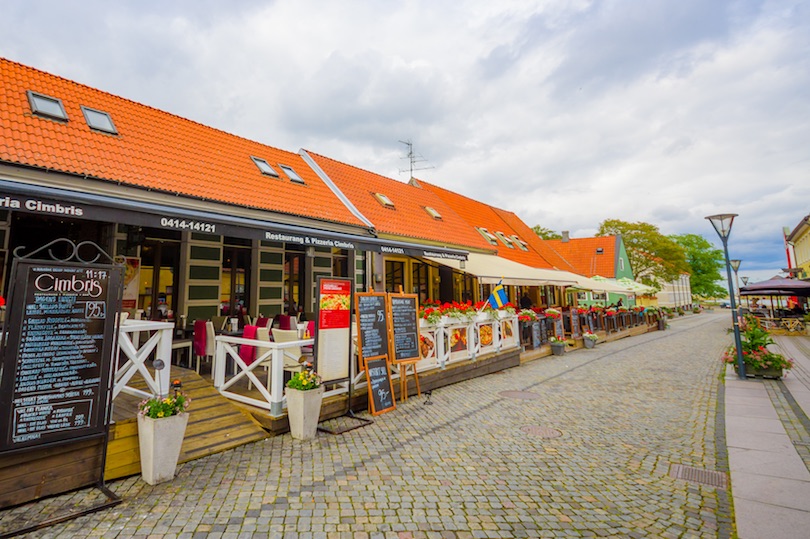 © Pablo Hidalgo / Dreamstime
© Pablo Hidalgo / DreamstimeThe picturesque coastal town of Simrishamn lies in southern Skåne County and is part of the the county’s ancient southeastern portion, Österlen. This region is known for its orchards, farmland, beautiful nature and small towns – of which Simrishamn is one.
Nearby Simris features not only an ancient church dating from the 1100s, but is also home to the 11th-century Simris Runestones: mysterious standing stones with runic inscriptions in the Old Norse language.
4. Jokkmokk
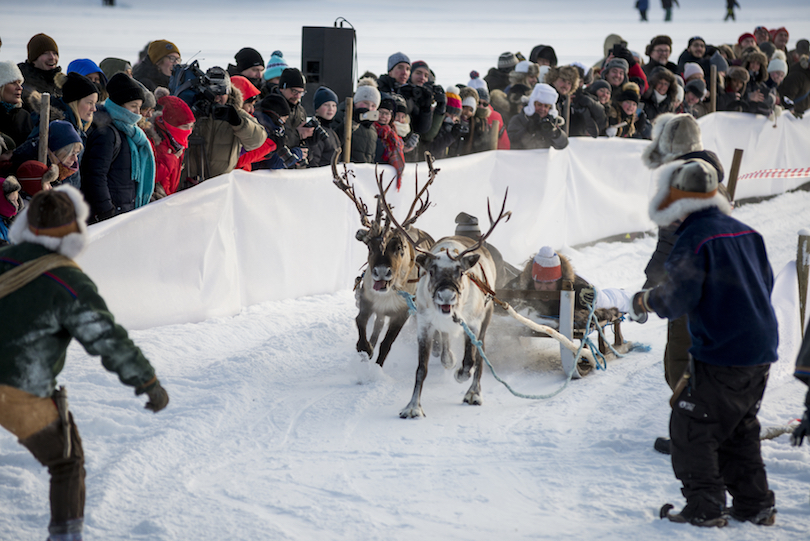 © Paoloairenti / Dreamstime
© Paoloairenti / DreamstimeThe town of Jokkmokk is located in Sweden’s far north Lapland province and has the snow and climate to go with it. In spite of that, or quite possible because of it, the town is a picturesque place to visit, with wooden houses and beautiful landscapes.
There’s a museum dedicated to the Sami people, an impossibly pretty 19th-century Gothic Revival church, plus an unbroken 400-year-old tradition in the Jokkmokk Market; taking place on the first Thursday of February each year it attracts thousands, playing host to concerts, trade and exhibitions, and is important for the Sami people.
3. Visby
Visby is known for its well preserved medieval town wall, built as fortification that also included defensive towers, and churches – though these are now mostly in ruins. Situated on the island of Gotland in the Baltic Sea, Visby was part of the medieval Hanseatic League, a confederation of guilds and market towns joined together for commercial and defensive purposes.
Its main square or Stora Torget is surrounded by interlinking cobbled streets and is lined with cafes – perfect for watching the world go by in this picturesque coastal town.
2. Sigtuna
Little Sigtuna is located just north of Stockholm and lays claim to the title of Sweden’s oldest town still in existence: it was founded in 980 by Swedish King Erik Segersäll. This millenia-old settlement is known today for its beautiful medieval town center, complete with traditional wooden buildings.
The center is occupied by cute shops and restaurants down winding narrow lanes, as well as the stone ruins of medieval churches. Its main street – called Stora Gatan – is also said to be Sweden’s oldest and dates back to the time of King Erik Segersäll’s reign.
1. Trosa
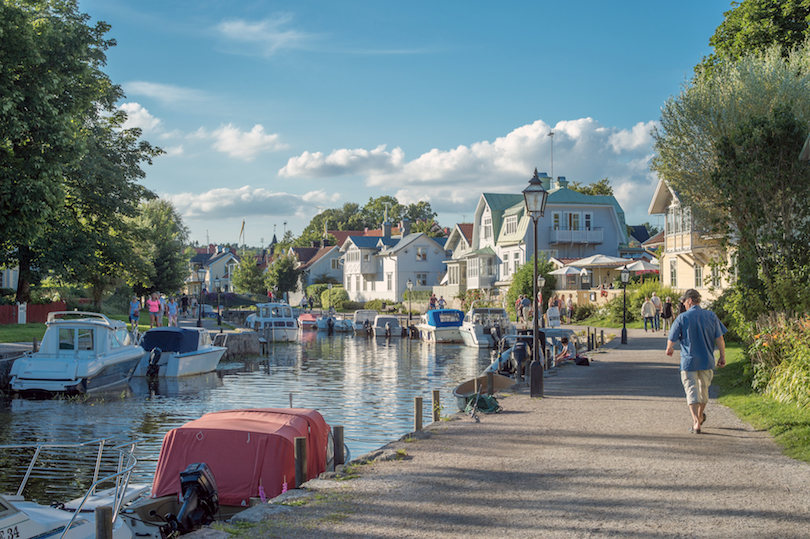 © Rolf52 / Dreamstime
© Rolf52 / Dreamstime
Picture-perfect Trosa has a pretty funny namesake: in Swedish the word trosa is like “panties” in English – but apparently the locals have heard all the jokes already. For part of the year at least, some of those locals are actually Swedish celebrities (including former Abba member Benny Andersson) who have summer houses here – often along the blissful banks of the Trosa River.
Known as a town since the 14th century, Trosa is popular for its pretty town center with a mix of establishments from trendy to traditional.
What Are the Best Things to Do in Sweden?
The Sweden Travel Guide largely recommends that callers try to make sure they explore a little further outside of the further popular( and populated) southern sections. If you're on a more limited timescale also the southern seacoast does have plenitude to offer from both a artistic and scenic perspective. You could relatively fluently spend your time split between checking out the major three metropolises and also camping/ hiking around these further beautiful girding areas. commodity that callers should be apprehensive of is that Sweden has fantastic laws guarding the freedom of right to bat.
You should be suitable to chamber out enough much anywhere you like furnishing there aren't rules proscribing it. As usual, it’s worth asking for squatter’s authorization if you need/ choose to transgress from the amazing campground network, but if you time your visit at the right time of time this can really help to open up the country.
For the stylish camping outside of the archipelagos, you ’ll need to transgress some distance from the main central and eastern roadways. South-central Sweden, especially around Lake Vanern and the Glaskogen timber public demesne, are fantastic for hiking/ camping with some sensational openings for checking out amazing views, enjoying foliage and fauna, and a little wild swimming!
In the public demesne, you ’d be well advised to spend around 50kr/ person/ day to have unlimited access to easily located camping and washing installations throughout the area. Flash back that there are no camping costs other than this, so for a way to enjoy Sweden on a hay budget also this is an outstanding option during the summer months.
Not numerous people would inescapably head to the northern regions besides downtime, but be apprehensive that during the peak times of the time these can come veritably busy indeed. We at the Sweden Travel Guide happily recommend you consider making the trip a little either side of the peak times, where you ’ll enjoy better prices and savings that can be invested in taking some sensational Sami- led original wildlife tenures.
Sweden is notorious for its carnivals and Midsommer is maybe the best known. While the country isn't exactly notorious for its sense of participated artistic tang for long corridor of the time, when the community does come together it's a truly amazing time! Swedes from across the earth make their stylish sweats to return home for this periodic jubilee( and do n’t worry it’s nothing like the lately released horror movie would suggest!).
Sweden is one of those countries which can be incredibly drinking to callers who like to share in these dateless public traditions. If you do try to come during this time of time flash back to bespeak well ahead or consider staying with original druthers
intimately( via Airbnb etc). If you mention you ’re in city for the jubilee you ’ll have a really rather awful list of openings available!
In a nutshell, Sweden is each about checking out the amazing metropolises and also making sure to invest a little time and trouble to appreciate the stunning natural beauty lying just beyond the further populated regions. You should approach the country with an open mind and a flexible diary as there aren't numerous better places to just keep on looking around the coming corner and seeing where it ’ll take you.
When is The Best Time to Visit Sweden?
The high season thresholds at Midsommer and tends to run primarily over July and August. You ’ll find that numerous Swedes take their own recesses at this time of time and head further amiss( generally to nearly more constantly warm!). Prices tend to be a little advanced for accommodation although only really around jubilee time. This is the perfect time to visit for checking out the metropolises and exploring the country.
Shoulder season – April & September/ October – are still great times to visitweather-wise and you ’ll have large corridor of the public premises enough much entirely to yourself. Some lodestones may close for occasional days weeks for general keep but are generally open.
Winter is important cooler although you ’ll find that the temperatures are a ‘ dry cold wave ’ that does n’t relatively feel so bad the farther inland you head. Dispensable to say, this is the peak time for Christmas requests and expositions, and also snow sports and suchlike in the north of the country.
| GOVERNMENT LINKS |
| General Information VISAS Tourism |
Do I Need A Tourist Visa in Sweden?
Sweden is very straightforward to enter and exit. EU and Schengen nationals can visit indefinitely whereas those from the USA, Canada, Australia, NZ and a handful of others can arrive without a visa and stay for up to 90 days. Visitor’s permits are required for longer stays and must be applied for before entry. Visitors from elsewhere (including South Africa and most Asian countries) will require a 90-day visitor visa. Apply for these in advance and be aware of the approximately €60 charge.
What Currency Is Used in Sweden?
Sweden uses the Krona (kr) that at the time of writing the Sweden Travel Guide exchanges for around 10kr = 1USD.
A good number of visitors are surprised how advanced Sweden is towards becoming a ‘cashless society’. It is no exaggeration to say that there are plenty of places – including public transport – where cash is simply no longer accepted! Even many banks do not actually hold cash deposits.
ATMs are widespread and usually offer very cheap exchange commissions, but only aim to use cash for casual expenditures. Cards are pretty much the way to spend in most aspects of Swedish life nowadays and remember they use a four-digit chip & PIN system and/or contactless swiping.
You’ll have no problems handling your finances in Sweden providing you are happy to keep track of your card spending.
Do U.S. Citizens Need A Visa for Sweden
U.S. citizens do not need a visa to enter Sweden, which simplifies entry into the country; however, a passport valid for at least six months past the planned date of departure is required.
Do I Tip In Sweden?
You can tip in Sweden but its very rare and usually reserved for truly outstanding service. Service industry workers enjoy good wages and subsidized housing/healthcare costs so don’t feel obliged to tip anywhere.
What Kind Of Budget Do I Need In Sweden?
Sweden isn’t exactly cheap but compared to Norway, Denmark, and to a slightly lesser extent Finland it’s still reliably more affordable. How much you end up spending in the country is going to depend heavily on where you stay and what you plan on doing. You could quite easily spend a week hiking and wild-camping and spend very little indeed, whereas if you stay in central hotels in the cities you’ll be immediately looking towards London/Paris levels of daily expenditure.
There are always cheaper options no matter where you find yourself, so plan your visit a little ahead so you can capitalize on discounted room rates pretty much anytime outside of Midsommer. Here are three budget estimates that very broadly suggest how far you should expect to stretch your money.
Budget (1000kr/day maximum)
We’ve decided to set this lower threshold quite high simply because of the added costs involved in staying in the major cities. You could easily slash this budget in half or even lower if/when you head out hiking or biking instead. No matter what you’ll need to stay in hostels with this budget – and the prices vary according to location and time of year. A good central Stockholm or Gothenberg hostel bed will cost somewhere around 30-40kr/night – easily a third of what you’d spend on a basic hotel room.
Food is quite expensive in Sweden. We’d recommend that budget visitors self cater as much as possible and use supermarkets for their daily meals, saving a little towards a basic restaurant/bar meal in the evening. You could quite easily get by on 30kr/day and on the plus side, food quality tends to be very high and served in good portions. Museums are again quite expensive so take advantage of multiple site discounts in the cities or be prepared to spend 100-150kr every time.
One pleasant surprise for the budget visitor is that rail tickets are actually quite reasonable. Book these online and remember you need to buy them in advance (fines are issued for those trying to buy tickets on board). A ticket from Gothenburg up to Karlstad rarely costs more than 30kr outside of peak times.
Mid-Level (1500-2000kr/day)
That double hotel room is going to cost you a fair chunk of your daily budget! Anywhere from 1000-1500kr is about right, but at least be satisfied to know that this almost always includes a high-quality breakfast buffet, pool, and a sauna! Contrary to popular belief it is possible to have a good night out in Sweden without remortgaging your home. Alcohol prices are way higher than Denmark but not as insane as Norway – a bottle of beer will typically cost around 70kr and cocktails more than double that amount. Higher quality restaurants (without booze) start at around 300kr and swiftly head north of that.
Once again though, Sweden is full of little surprises for the keen-eyed penny-pincher. Public transport in the cities is almost entirely electronic and you can pick up a 72-hour passcard that allows for unlimited travel for about 200kr. That is pretty much essential if you rightly intend on visiting the archipelagos in any sense of convenience.
High-End (2500kr+/day)
As you may have anticipated there are stacks of very high-end accommodation options throughout Sweden from boutique apartments through to scenic lodges. What they do share in common are world-class quality and sensational prices. Expect to blow the lower end of this daily budget on five-star accommodation alone. The best restaurants can also become very expensive indeed especially if you are aiming for specialist seafood and multi-course a la carte dining. Allow for 1000kr+/person.
Realistically you can enjoy the north of the country during peak season within the lower constraints of this budget – just try and book as far in advance as possible. Pretty much everything involving snowsports and wilderness adventures is very expensive indeed, and accommodation prices – even for the basics – can go through the roof in more isolated regions.
What Languages Are Spoken in Sweden?
Swedish is the national language and you’ll soon discover that the majority of people also speak a second, third or even fourth language. English is taught extensively in Swedish schools and much of the mainstream TV is broadcast in this language with local subtitles. As you’d expect, almost everyone speaks very good English but don’t count on everyone being comfortable speaking it fluently. As with anywhere a couple of basic Swedish words is a good icebreaker.
What Religions Are Practiced in Sweden?
Sweden is not a very religious country and while some people do still practice they tend to keep it very much to themselves. While the country is entirely secular it does allow for total freedom of religion so you’ll have no problems observing your own beliefs either. Despite their rather distant attitude towards religion, you’ll find that Christmas festivities are a big deal throughout the country! Just expect lots of Santa Clauses and reindeer instead of crucifixes and midnight services.
Practical Tips From The Sweden Travel Guide
Sweden is fantastically accessible, extremely safe, and an ideal option for travelers who want to enjoy a free-minded and hassle-free experience. It is wealthy and often leads the world in regards to quantifiable standards of living and equality rankings, but Swedes themselves are not the kind of people who necessarily boast about such achievements. You’ll find that the Swedish people tend to actually be quite shy and not exactly partial to chatting with strangers on a casual basis.
Small talk is certainly not something they naturally warm towards – although once you get to know them better they are without a doubt some of the friendliest and most interesting people you’ll find anywhere.
As discussed previously many people choose to visit Sweden for just a short while and don’t quite appreciate how much else there is to explore throughout this surprisingly large and varied country. Visitors who are happy to camp and hike/cycle wherever their heart leads them will discover a fantastically open country that is perhaps one of the best in the world for just enjoying unspoiled nature.
Expect lots of pine trees, but once you have broken through them you’ll discover some magnificently beautiful lakes and hilltops that will pretty be yours alone. This side of Sweden is something that other Scandinavians and the Germans have understood a while (you’ll see plenty of vehicles with their national ID stickers indicating this) and there’s literally nothing stopping you from enjoying it also.
At this stage of the Sweden Travel Guide, we’ll focus more on the basic practicalities of getting around this wonderful country safely and in good fashion. It really is very straightforward – and the fact that practically everyone speaks English certainly helps a little – making this the perfect country for visitors aiming to relax and enjoy a truly tranquil tour.
What About Health and Safety in Sweden, Is It Safe?
Sweden is one of the safest countries in the world to visit and the chances of you falling victim to any crime are extremely low. There are parts of the major cities that are best avoided at night but these are far from any of the parts you’d likely be visiting anyhow.
Healthcare is state-run and generally world-class. The country is a member of the EHIC scheme meaning that other eligible nationals will receive free care besides a small initial charge (approx 250kr). Those from elsewhere should make certain that they have comprehensive insurance to cover all costs as these can become incredibly high.
Tap water is entirely safe to drink and you’ll find well-stocked pharmacies throughout the country. The Sweden Travel Guide recommends that visitors make copies of any essential medical documentation and prescriptions before they travel. Save these securely to the Cloud and keep some spare physical copies in your luggage just in case. If you need your prescription reissued then visit a health clinic to be seen by an on-duty doctor (appointments are not necessary). Chances are your exact medication will be available but be prepared to accept non-branded alternatives depending on the requirement.
Wild there are some ‘dangerous’ animals in the Swedish countryside they are not going to threaten or come even close to people. Elks and deer roam freely so take care when driving especially at night (watch out for the roadsigns). Check yourself thoroughly for ticks even if you do not head far into the countryside – and know how to safely remove them.
What is the Best Transportation in Sweden?
Many visitors to Sweden actually find it easier to fly to Copenhagen and then take the train to Malmo and beyond. International flights tend to focus primarily on Stockholm (with some occasional options for Gothenberg) otherwise, so depending on where you are intending on heading factor this into your travel plans.
Internal flights are an expensive option within the country but most people will look towards using the reliable and decent value rail network instead. If you intend on heading to the far north of the country you may be better to fly directly to Northern Norway and travel overland from there. Book flights as far in advance as possible if these are going to be an essential component of your visit.
Within the country, you’ll find the aforementioned rail network and equally handy local bus networks will easily cater for most people’s requirements. Remember to prebook your tickets and print these out or save them to your phone before travel. Prices are generally fair although express intercity services during peak times of the day can be very expensive indeed.
Car hire is another expensive luxury in Sweden and you’ll perhaps notice here than distances tend to pass very slowly indeed! Stick very carefully to the rigorously enforced speed limits! Car hire is expensive – as is gas – but you’ll find it a useful option for heading out to the truly wilder parts of the country.
For most people, it is only really going to be an option when the costs are shared between a group. You do not require a car for urban exploration and frankly hiring one is probably more hassle than its worth. Cycling, on the other hand, is a fantastic way of getting around both urban and rural parts of Sweden. Look out for trains with designated cycle storage.
What Are the Best Accommodations in Sweden?
As you might have noticed over the Sweden Travel Guide places to stay here can be rather expensive. Accommodation is barely much cheaper than what you’d find in Norway and there is little in the way of discount chains or budget motels. While the prices are quite substantial on paper you’ll naturally find these less of a blow providing you share (the prices we have quoted so far are for double rooms) and twins are rarely much more expensive than singles.
Hostels are much more expensive in the cities that the more outdoors orientated bunkhouses you’ll find in the countryside. Book these in advance where you can and remember that you could quite easily call ahead and check for availability and/or book places online as you travel.
Camping is always good value and you’ll really appreciate that price difference in Sweden. Campsites range from enormous sites packed full of amenities and services through to pretty much an open field. Make use of the fact that you can legally stay (usually for just a single night) in many places in the country providing you keep your distance from residential and commercial properties. The general rule is that if it isn’t enclosed by a fence then it’s fair game!
How Can I Practice Responsible Tourism In Sweden?
Sweden is incredibly environmentally conscious and failing to make use of recycling opportunities is a finable offense. You’ll find recycling depots attached to most of the major supermarkets where people drop off their carefully segregated recycling materials (for a small cash return that is then redeemed instore). In this regard, you are basically compelled to be an environmentally responsible person while visiting the country!
Broader issues tend to surround the impact of high-performance vehicles within the country and the rights of Sami indigenous people. In the first case, 4X4s may receive a bad press but are basically essential for those who live not too far outside of the major communities. While Swedish roads are outstanding quality, they do become heavily snowed for a few months of every year. Such vehicles may seem contrary to the Swedish environmental image but there is a genuine need for most of the time.
The Sami issues are thornier and as usual, there are two sides to every tale. The state heavily subsidizes these communities and legally protects large swathes of northern lands for their reindeer herds, but there are still vocal claims being made that they are considered second citizens.
Our advice would be quite simple and the same that applies to many other places in the world. You’ll enjoy a better experience making the most of the local experience and cultural attachments when visiting – so spend your money where possible on Sami community projects, businesses, tours, hotels, and so forth.
Last but not necessarily least – hunting is popular in Sweden and something that many visitors may find slightly distasteful. After all, why would anyone want to shoot an Elk? The truth is that hunting is extremely strictly regulated (and banned in large areas) with licenses issued to only keep populations in check as required. Nobody is asking you to participate or sponsor it in any way.
What Food Should I Try In Sweden?
Kantarell mushrooms (lightly yellow capped) grow in the forests at certain times of the years and are perhaps the best of their kind in the world. As they are something of a delicacy they can command incredible charges in restaurants, so if you identify them and cook some up while camping, be satisfied knowing that someone in Stockholm is paying 500kr/plate for the pleasure! Loganberries and blueberries are often also found growing in enormous quantities to remember to pack your foraging gloves!
Swedish meatballs are probably the best known national dish (largely thanks to IKEA) and are traditionally served with simple potatoes and gravy. Our advice for the perfect Swedish specialty would be to make sure to grab a rakmacka sandwich (a mountain of prawns served on toast) at any given opportunity. They’re tremendous and will keep you filled up for hours! Look out for plenty of seasonal and specialty meats (elk, reindeer, eels) if that’s your thing, and remember that the supermarkets often sell enormous mix-your-own salads for bargain basement prices (handy for those on the go lunches).
Something that may surprise those new to Sweden is that it is the world’s leading consumer of pick’n’mix sweeties! While hardly a national delish that’ll feature in many restaurants, prices are again rock bottom if you need some sugary fuel for a hiking expedition.
In the experience of the team at the Sweden Travel Guide, you’ll have no problems whatsoever eating well in the country if you happen to follow a restricted diet. Many vegetarian/vegan foods are available in supermarkets and there are plenty of specialist restaurants/cafes that cater specifically to this market.
What Should I Pack for A Trip to Sweden?
Good quality clothing is quite expensive in Sweden so we advise you to take care to pack suitable clothing for your trip. Camping gear and tents are also pricy so factor that into your plans and luggage allowances. A pair of tweezers and a handheld magnifying glass are good ideas for helping with tick removal. Other than this – and the customary power adaptor – you should not really need to bring anything else specifically with you.
What Clothes Should You Wear In Sweden?
Sweden is quite fairly regarded as a rather stylish country – and you should dress a little smarter than you may expect in the major southern cities to fit in! Joking aside, nobody will really care much. It is a good idea to make sure you dress sensibly for the rest of the country. Long sleeves and good quality waterproofs are necessary during the summertime (to protect against ticks and the occasional shower) and a hat is not a bad idea for providing a little shade in the warmest months. During the winter you should dress for snow – allow for plenty of layers and invest in good quality boots.
What Are Some Interesting & Important Facts About Sweden?
We are almost at the end of the Sweden Travel Guide and hope you have found this an interesting and informative read! Sweden is a brilliant destination by itself or as a part of a wider Scandinavian or European tour – especially if you like the easy contrast between city and countryside splendors.
We really do recommend that you try and head further north as far as your time and budget can allow as the inherent beauty of this country is truly special and almost wholly unspoiled. Sweden has something for everyone and you don’t need an enormous amount of cash to tour the country in comfort.
To conclude the Sweden Travel Guide we’ll leave you with a few fun little facts about this one-of-a-kind country.
▸ Shrove Tuesday is known as ‘Fat Tuesday’ where any sugary treats are fair game! We recommend semla buns!
▸ There is a lottery system in Stockholm whereby those who obey road rules are automatically entered into a prize draw.
▸ Swedish income tax rates are over 50% (remember that when admiring how clean everything is).
▸ Salty licorice is one of the most popular ice cream flavors.
▸ Over 600,000 Swedes are members of choirs – despite their general disregard for religion.
▸ In a country home to wolves, bears, and snakes, wasps kill more people per year.
▸ The Swedish word for marriage can also be used to mean poison or gift…
▸ On Christmas Eve people leave bowls of porridge on their doorstep to feed the gnomes.
▸ Fermented Baltic herring – surströmming – is not for the faint-hearted…
▸ Crayfish parties are one of the most popular social events.
We hope you enjoyed reading the Budget Sweden Travel Guide – and good travels! Contact us with any questions you may have about travel to Sweden.
This article has been sourced from various publicly available news platforms around the world. All intellectual property rights remain with the original publishers and authors. Unshared News does not claim ownership of the content and provides it solely for informational and educational purposes voluntarily. If you are the rightful owner and believe this content has been used improperly, please contact us for prompt removal or correction.


